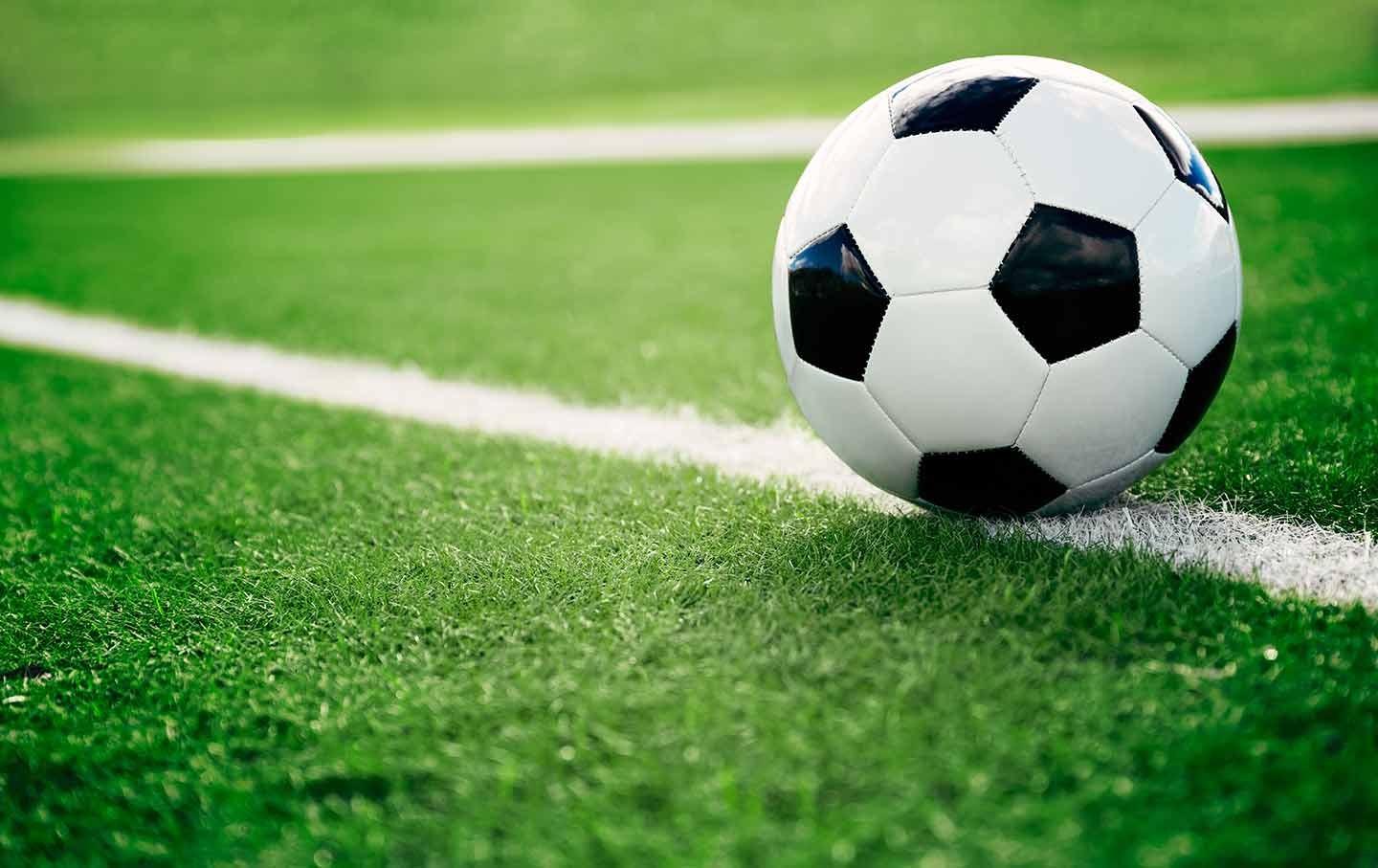Die Zeit zwischen Weihnachten und Silvester eignet sich am besten, um Bilanz für das vergangene Jahr zu ziehen und sich Gedanken über gute Vorsätze für das neue Jahr zu machen. Spätestens im neuen Jahr entsteht dann der Impuls, alles besser zu machen als vergangenes Jahr und die Vorsätze in die Tat umzusetzen. Haben Sie schon gute Vorsätze für das neue Jahr gefasst? Wenn nicht: Wir verraten 10 gute Vorsätze, die der Gesundheit gut tun, und nennen kleine Tricks, die zur Umsetzung beitragen.
1. Weniger Stress
Stress begleitet heutzutage nicht nur Berufstätige. Auch Schüler und Hausfrauen leiden darunter, weil sie den Anforderungen des Alltags nicht mehr standhalten können. Wer häufig unter Stress leidet, ist dauerhaft angespannt und riskiert Burnout und weitere körperliche Beschwerden. Deswegen sollten gestresste Personen darauf achten, den inneren Druck gezielt abzubauen.
Überlegen Sie dafür, welche Situationen besonders belastend für Sie sind und versuchen Sie, diese zu vermeiden. Entspannende Bäder nach der Arbeit und Sport wirken sich beispielsweise positiv auf das Gemüt aus. Nehmen Sie außerdem keine Arbeit mit nach Hause mit und bewältigen Sie eine Aufgabe nach der anderen. Dafür eignet es sich, Wochenpläne zu erstellen. Weihen Sie Familie, Freunde und Arbeitskollegen in Ihren Vorsatz, Stress zu vermeiden und besser abzubauen, ein. Diese können Sie bei Ihrem Vorhaben unterstützen.
2. Mehr Bewegung und Sport
Sport hält gesund, macht fröhlich und steigert die Konzentration. Machen Sie sich bewusst, weshalb Sie mehr Sport treiben möchten. Konkrete Ziele wie Abnehmen oder mehr Sport für die Gesundheit dienen bei jeder Sporteinheit als Motivation. Zudem helfen sie dabei, die richtige Sportart zu finden. Denken Sie anfangs immer wieder daran, dass Sport in der kühlen Jahreszeit aufmuntert und das Immunsystem stärkt.
Um den richtigen Sport zu finden, können Sie zunächst unterschiedliche Sportarten ausprobieren. Oft hilft ein Trainingspartner bei der Motivation. Auch eine Sportgruppe oder ein Verein verpflichten und helfen durch regelmäßige Trainingszeiten eine Routine im Alltag zu schaffen. Trainingserfolge können Sie mit Kleinigkeiten belohnen.
3. Gesündere Ernährung
Eine gesunde Ernährung zeichnet sich durch ausgewogene und abwechslungsreiche Kost aus. Dazu zählen viel Obst, Gemüse, Fisch, fettarme Milch und fettarmes Fleisch sowie Mineralwasser. Eine solche Ernährung wirkt sich nicht nur positiv auf die Gesundheit aus, sondern steigert auch das Wohlbefinden.
Für eine langfristige Umstellung der Ernährung müssen Sie alte Gewohnheiten aufgeben und diese durch Neue ersetzen. Machen Sie sich dafür am besten jede Woche einen Koch- und Ernährungs-Plan. Nimmt die ganze Familie an dem Vorhaben Teil, ist es noch einfacher, die Ernährung umzustellen. Damit Ihnen die Umstellung leichter fällt, können Sie sich zwischendurch ruhig mit etwas Schokolade oder Ähnlichem belohnen – nur übertreiben sollten Sie es nicht.
4. Mehr Zeit für sich selbst
Um das Leben im Gleichgewicht zu halten, sind Freizeit und Zeit für sich selbst sehr wichtig. In dieser Zeit können Sie Hobbys nachgehen, sich mit Freunden treffen und entspannen. Das hält die Psyche fit und leistungsfähig und wirkt sich gleichzeitig positiv auf die Gesundheit aus.
Halten Sie jede Woche mindestens einen Tag oder einige Stunden täglich in Ihrem Terminkalender für Ihre Zeit mit sich selbst frei. Am besten sollte es immer der gleiche Tag oder die gleiche Uhrzeit sein. So entsteht nämlich eine Routine, die sich in Ihren Alltag integrieren lässt. Um Unterstützung zu erhalten und eine größere Verbindlichkeit zu erzeugen, sollten Sie die Termine Familie und Freunden mitteilen.
5. Weniger Rauchen
Rauchen lässt nicht nur die Haut altern und schadet der Lunge, es kann auch die Lebenserwartung um bis zu zehn Jahre verkürzen. Bereits nach einem Jahr Abstinenz vergrößert sich das Lungenvolumen wieder und die Risiken für Herzerkrankungen und Lungenkrebs nehmen deutlich ab.
Wenn Sie mit dem Rauchen aufhören möchten, sollten Sie sich kleine Ziele setzen. Reduzieren Sie zunächst nach und nach die Anzahl an Zigaretten. Suchen Sie einen Ersatz wie Kaugummis für die Zigarette und nutzen Sie Ihre fünf Minuten Raucherpause auf eine andere Art und Weise. Machen Sie sich dafür eine Liste mit Dingen, die Sie anstatt des Rauchens tun könnten.
Der Körper benötigt effektiv nur drei Tage zur Entwöhnung. Oft hilft es auch, sich Verbündete zu suchen und kleine Wetten abzuschließen, wer es länger ohne Zigarette aushält. Dies steigert den Ehrgeiz für das Vorhaben enorm. Da der Nikotinentzug ein Defizit der Endorphine verursacht, ist es ratsam, sich in der Entwöhnungsphase mit Kleinigkeiten zu belohnen. Durch diesen Trick werden Glücksgefühle erzeugt.
6. Weniger Alkohol
Bereits ein alkoholisches Getränk pro Tag schadet dem Körper. Von dem Verzicht auf regelmäßigen Alkoholkonsum profitiert nicht nur die Leber, sondern auch das Immunsystem kann sich wieder voll und ganz der Abwehr von Infekten widmen. Außerdem nimmt das Krebsrisiko ab und die Gehirnleistung steigt.
Wenn Sie weniger Alkohol trinken möchten, sollten Sie Ihre Trinkgewohnheiten ändern und sich bewusst machen, wie schädigend Alkohol für die Gesundheit ist. In einem ersten Schritt ist es hilfreich, keinen oder zumindest weniger Alkohol im Haus zu halten. Das hilft dabei, Alkohol nur noch zu besonderen Anlässen zu trinken. Wenden Sie kleine Tricks an, um sich schrittweise zu entwöhnen: Trinken Sie lieber Säfte, Wasser und Softdrinks zu Ihrem Essen, nehmen Sie kleinere Schlucke und kleinere Gläser.
7. Ausreichend schlafen
Müdigkeit sorgt für schlechte Konzentration und führt auf Dauer zu einem geschwächten Immunsystem. Um sich am Morgen erholt und frisch zu fühlen, sollten Sie daher genügend schlafen.
Nehmen Sie sich vor, Ihr persönliches Optimum an Schlaf täglich einzuhalten. Dafür sollten Sie frühzeitig ins Bett gehen. Lassen Sie dafür Fernsehsendungen auch mal ausfallen und verabschieden Sie sich von späten Treffen etwas früher. Stehen Sie zeitig auf und vermeiden Sie Mittagsschläfchen, sodass Sie am Abend früh müde werden und gut einschlafen können. Nach einigen Wochen pendeln sich die Schlafenszeiten und die Länge des Schlafes ein.
Um schnell einzuschlafen hilft es, das Zimmer gut abzudunkeln und die Zimmertemperatur bei 17 Grad Celsius zu halten. Trinken Sie einen Kräutertee und lesen Sie ein Buch vor dem Schlafen gehen – das kann die Müdigkeit fördern. Die letzte Mahlzeit sollten Sie drei Stunden vor dem Schlafen einnehmen.
8. Mehr Zeit für Familie und Freunde
Für eine größere Zufriedenheit im Freundeskreis und in der Familie ist es sehr wichtig, sich genügend Zeit für beides einzuräumen. Vereinbaren Sie mit Freunden daher weit im Voraus Verabredungen oder legen Sie einen bestimmten Tag in der Woche oder im Monat für Treffen fest. Behandeln Sie Verabredungen mit Freunden mit gleicher Priorität wie geschäftliche Termine. Das macht es Ihnen schwieriger, Treffen abzusagen.
Planen Sie Familientage in Ihren Alltag ein. Bei der Planung sollten Sie bereits festlegen, was genau Sie zusammen unternehmen werden. Vor allem Kinder freuen sich über Ausflüge, Spiele und Freizeitaktivitäten. Das fördert den Zusammenhalt und macht die gesamte Familie glücklicher. Feste Pläne schüren zudem die Vorfreude und machen es schwieriger, Ausflüge zu verschieben. Am besten legen Sie zu Jahresbeginn schon erste Termine fest. Teilen Sie ihre Vorhaben außerdem auf der Arbeit mit. Das informiert Chefs und Arbeitskollegen frühzeitig darüber, dass Sie an bestimmten Tagen für Überstunden nicht zu haben sind.
9. Zur Vorsorge gehen
Ab 35 Jahren hat jeder gesetzlich Versicherte einen Anspruch auf Vorsorgeuntersuchungen zur frühen Erkennung von Erkrankungen. Informieren Sie sich zuerst darüber, welche Vorsorgeuntersuchungen für Ihr Alter angeboten werden. Haben Sie eine familiäre Krankheitsgeschichte? Dann sollten Sie sich früher untersuchen lassen.
Machen Sie bereits zu Beginn des Jahres Termine bei Ärzten, sodass die Termine fest in Ihrem Kalender eingeplant sind. Belohnen Sie sich ruhig nach jedem Arztbesuch mit einer Kleinigkeit. So erscheint der Gang zum Arzt weniger lästig und lässt sich mit einer schönen Tätigkeit verbinden.
10. Weniger Fernsehen
Wer viel Zeit vor dem Fernseher verbringt, schadet durch die mangelnde Bewegung seinem Körper. Die Gedächtnisleistung und das Gewicht sind besonders von negativen Folgen betroffen. Vor allem auf die Frühentwicklung von Kindern wirkt sich ein hoher Fernsehkonsum negativ aus.
Um weniger Fern zu sehen, sollten Sie bestimmte Fernsehzeiten arrangieren. Wählen Sie Ihr Programm mit Bedacht und versuchen Sie, maximal eine Stunde am Tag vor dem Fernsehgerät zu verbringen. Machen Sie sich klar, dass Sie die Zeit vor dem Fernseher viel sinnvoller nutzen könnten. Lesen Sie beispielsweise ein Buch oder eine Zeitung oder investieren Sie mehr Zeit in Kochen und Freunde.
Mehr zum Thema: gesundheit.de


 .
.








 Erkenne Situationen im Voraus. Denke voraus, während der Ball auf dich zukommt. Du solltest jetzt schon wissen, wie du weiterspielst, sobald du den Ball hast. Für eine gute Verteidigung gilt: Wenn du den nächsten Spielzug des Gegners vorhersehen kannst, erhöht dies deine Chancen, ihn aufzuhalt.
Erkenne Situationen im Voraus. Denke voraus, während der Ball auf dich zukommt. Du solltest jetzt schon wissen, wie du weiterspielst, sobald du den Ball hast. Für eine gute Verteidigung gilt: Wenn du den nächsten Spielzug des Gegners vorhersehen kannst, erhöht dies deine Chancen, ihn aufzuhalt. Mache dem Gegner Druck. Mache es deinem Gegner nicht einfach, an den Ball zu kommen. Zwinge ihn in die andere Richtung und mache ihm Druck, damit er einen Fehler begeht. Pass aber auf, dass dir dabei kein Foul passiert und du den Gegner nicht verletzt.
Mache dem Gegner Druck. Mache es deinem Gegner nicht einfach, an den Ball zu kommen. Zwinge ihn in die andere Richtung und mache ihm Druck, damit er einen Fehler begeht. Pass aber auf, dass dir dabei kein Foul passiert und du den Gegner nicht verletzt. Setze auf Überraschungseffekte. Lass deinen nächsten Spielzug nicht zu offensichtlich werden. Verändere deine Geschwindigkeit: Laufe zuerst sehr schnell und werde langsamer, sobald der Gegner in deine Nähe kommt. Er wird ebenfalls abbremsen und du kannst wieder beschleunigen, womit du ihn abhängst. Wenn du einen Verteidiger gerade ausgetrickst hast, wird dieser wahrscheinlich besser vorbereitet sein, wenn du den gleichen Trick nochmal versuchst. Gestalte dein Spiel daher abwechslungsreich.
Setze auf Überraschungseffekte. Lass deinen nächsten Spielzug nicht zu offensichtlich werden. Verändere deine Geschwindigkeit: Laufe zuerst sehr schnell und werde langsamer, sobald der Gegner in deine Nähe kommt. Er wird ebenfalls abbremsen und du kannst wieder beschleunigen, womit du ihn abhängst. Wenn du einen Verteidiger gerade ausgetrickst hast, wird dieser wahrscheinlich besser vorbereitet sein, wenn du den gleichen Trick nochmal versuchst. Gestalte dein Spiel daher abwechslungsreich. Nutze die Außenseiten des Spielfeldes. Wenn sich viele Spieler in der Feldmitte befinden, ist ein Durchkommen nicht einfach. Versuche es lieber an der Außenseite. Schieße den Ball dann zurück in die Mitte, wo einer deiner Mitspieler den Spielzug beendet. Passe dabei jedoch auf, dass du den Ball dabei nicht ins Aus schießt.
Nutze die Außenseiten des Spielfeldes. Wenn sich viele Spieler in der Feldmitte befinden, ist ein Durchkommen nicht einfach. Versuche es lieber an der Außenseite. Schieße den Ball dann zurück in die Mitte, wo einer deiner Mitspieler den Spielzug beendet. Passe dabei jedoch auf, dass du den Ball dabei nicht ins Aus schießt. Spiele den Ball mit anderen im Zick-Zack. Gemeinsam durchbricht man eine starke Verteidigung am besten. Indem ihr den Ball hin und her spielt, verwirrt ihr den Gegner.
Spiele den Ball mit anderen im Zick-Zack. Gemeinsam durchbricht man eine starke Verteidigung am besten. Indem ihr den Ball hin und her spielt, verwirrt ihr den Gegner. Bleibe konzentriert. Das Spiel ist erst zu Ende, wenn der Schiedsrichter es sagt. Lasse nicht nach, nur weil deine Mannschaft in Führung liegt oder weil die Zeit fast rum ist. Ein Tor in letzter Minute kann euch den Sieg koste
Bleibe konzentriert. Das Spiel ist erst zu Ende, wenn der Schiedsrichter es sagt. Lasse nicht nach, nur weil deine Mannschaft in Führung liegt oder weil die Zeit fast rum ist. Ein Tor in letzter Minute kann euch den Sieg koste Zeige Kampfgeist. Lasse den Trainer deine Motivation erkennen, damit er dich bei den wichtigen Spielen einsetzt. Gebe niemals auf, helfe deinen Mitspielern, verteidige und greife an – reiße mit deiner Begeisterung die gesamte Mannschaft mit.
Zeige Kampfgeist. Lasse den Trainer deine Motivation erkennen, damit er dich bei den wichtigen Spielen einsetzt. Gebe niemals auf, helfe deinen Mitspielern, verteidige und greife an – reiße mit deiner Begeisterung die gesamte Mannschaft mit. Verbessere deinen Orientierungssinn. Es ist nicht leicht, das Spiel zu überblicken, wenn man mitten auf dem Feld steht. Wenn du jedoch stets weißt, wo deine Mitspieler und deine Gegner stehen, kannst du deine Spielzüge besser Kommuniziere mit deinen Teammitgliedern. Lass sie immer wissen, was gerade abgeht, damit sie informiert sind.
Verbessere deinen Orientierungssinn. Es ist nicht leicht, das Spiel zu überblicken, wenn man mitten auf dem Feld steht. Wenn du jedoch stets weißt, wo deine Mitspieler und deine Gegner stehen, kannst du deine Spielzüge besser Kommuniziere mit deinen Teammitgliedern. Lass sie immer wissen, was gerade abgeht, damit sie informiert sind. Übe so viel wie möglich. Übe jeden Tag ungefähr eine Stunde für dich alleine oder mit einem Freund und trainiere die Dinge, die du verbessern möchtest.
Übe so viel wie möglich. Übe jeden Tag ungefähr eine Stunde für dich alleine oder mit einem Freund und trainiere die Dinge, die du verbessern möchtest. Ein Fehler, der oft gemacht wird, ist dass alle Spieler sich um den Ball drängen. Wenn der Gegner den Ball hat reicht es, wenn ein Spieler von deinem Team ihn bedrängt aber denk daran, einen weiteren in der Nähe zu haben, damit der Ball an diesen abgegeben werden kann.
Ein Fehler, der oft gemacht wird, ist dass alle Spieler sich um den Ball drängen. Wenn der Gegner den Ball hat reicht es, wenn ein Spieler von deinem Team ihn bedrängt aber denk daran, einen weiteren in der Nähe zu haben, damit der Ball an diesen abgegeben werden kann. Habe Spaß am Spiel. Das ist das allerwichtigste. Wenn es dir keinen Spaß mehr macht, kannst du genauso gut aufhören. Das Spiel soll Freude bereiten und nicht dein Selbstbewusstsein schmälern.
Habe Spaß am Spiel. Das ist das allerwichtigste. Wenn es dir keinen Spaß mehr macht, kannst du genauso gut aufhören. Das Spiel soll Freude bereiten und nicht dein Selbstbewusstsein schmälern. 


 Asegúrate de que no haya ningún jugador del equipo opuesto en la trayectoria del pase
Asegúrate de que no haya ningún jugador del equipo opuesto en la trayectoria del pase Si estás corriendo y vas a dar un paso, desacelera y coloca tu pie que no patea cerca de la bola.
Si estás corriendo y vas a dar un paso, desacelera y coloca tu pie que no patea cerca de la bola. Si estás quieto, trata de dar un paso hacia atrás y coloca el pie que no patea al lado de la bola.
Si estás quieto, trata de dar un paso hacia atrás y coloca el pie que no patea al lado de la bola. El pie que no patea debería estar apuntando hacia tu objetivo
El pie que no patea debería estar apuntando hacia tu objetivo Patea firmemente al balón con el lado interior de tu pie
Patea firmemente al balón con el lado interior de tu pie Asegúrate de que tu tobillo esté firme
Asegúrate de que tu tobillo esté firme Continúa y levanta tu pierna. Asegúrate de que tu pierna no se levante demasiado o si no te caerás hacia atrás
Continúa y levanta tu pierna. Asegúrate de que tu pierna no se levante demasiado o si no te caerás hacia atrás Sigue jugando y asegúrate de que el pase llegue al objetivo. Si no es así, trata de recuperarlo.
Sigue jugando y asegúrate de que el pase llegue al objetivo. Si no es así, trata de recuperarlo. Controla el balón antes de decidir qué quieres hacer con él.
Controla el balón antes de decidir qué quieres hacer con él. Cuando pases la bola a un jugador que está lejos de ti, necesitarás usar más potencia en tu disparo para que la bola llegue a él
Cuando pases la bola a un jugador que está lejos de ti, necesitarás usar más potencia en tu disparo para que la bola llegue a él






